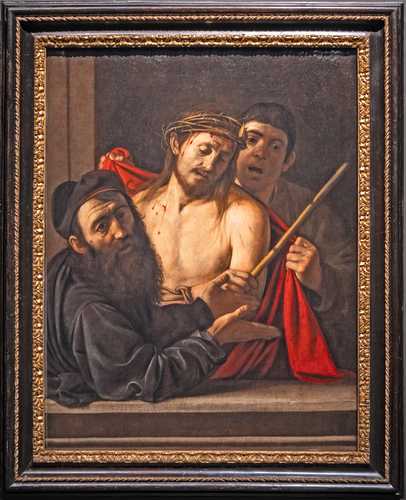Madrid. He Damn Caravaggio
he Behold the man painted by the brilliant Italian artist between 1605 and 1609, is already on display at the Prado Museum in Madrid, in a special room adapted for its exhibition, which tells the story of one of the most surprising finds of recent decades in the history of art.
Its owner, a billionaire Anglo-Saxon collector, whose identity is unknown, and who could have paid several tens of millions of euros for the work, is committed to having the painting displayed permanently.
Michelangelo Merisi da Caravaggio (1571-1610) was a turbulent artist, with a volcanic character and a complex personality. This way of being led him to get involved in numerous conflicts and to have to change cities from time to time.
His work, considered one of the clearest precursors of the Baroque, is coveted and admired, especially because only around 78 pieces authenticated by experts are preserved. In Spain, there are currently three, one in the Gallery of the Royal Collections, Salome with the head of Baptist (1607); the one that belongs to the Prado Museum, David conquering Goliath (1600), and now the Behold the man.
Vicissitudes overcome
The history of this painting is unique. Three years ago, in an auction house very close to the Prado Museum, this painting was put up for sale with a starting price of 1,500 euros (27,000 pesos), whose owners and those responsible for the bidding attributed it to a disciple
by José de Ribera, the genius of Andalusian baroque art, but they were not able to know who it belonged to.
The experts in Italian painting at the Madrid art gallery immediately alerted the Spanish Ministry of Culture that this work could actually be a Caravaggio. lost
so, to neutralize its sale and departure from the country, the Spanish government decided to decree that it was an Asset of Public Interest, which guaranteed that the work, regardless of who acquired it, could not leave the Spanish borders without authorization from the institutions responsible for national heritage.
After subjecting the painting to numerous tests and analyzes by the leading experts in Caravaggio’s work, both in Spain and Italy, the conclusion was reached unanimous
that it was effectively a lost work by the Italian artist, and, therefore, its value was incalculable. In the end, the piece was auctioned, but the price was well above the original 1,500 euros and could have exceeded 30 million euros, according to various information that has not been confirmed by any official source, that is, by the Prado Museum or the auction house that sold it.
After the verification process of the painting and its subsequent sale, in which there was also a careful restoration, the Prado Museum reached an agreement with the current owner to exhibit it for the next nine months, in a room dedicated exclusively to the piece. , with the hope, explained the director of the Madrid venue, Miguel Falomir, that once that time is over it will be displayed permanently, foreseeably in the section dedicated to naturalistic paintings of the time.
At this time, the Behold the man It can be seen next to the room that shows the museum’s other Caravaggio, David conquering Goliath, recently restored as well, which, as David García Cueto, head of Italian and French painting at the Prado, stressed, belongs to a very different moment despite the short time that separates them, between six and nine years.
The Italian expert Cristina Terzaghi, who will be the curator of a large exhibition on Caravaggio at the Palazzo Barberini in Rome, in which she hopes this canvas will be exhibited, explained that the painting, once restored, It surprises us, it goes beyond our expectations, and, both by tracing his travels from Italy and by reflectography and the comparison of his lines with other Caravaggios, I believe there is little doubt in his attribution.
.
The oil painting represents the historical motif of the Roman governor Pontius Pilate presenting Christ to the people with the phrase: Behold the man
(behold the man), one of the most dramatic moments of the Passion, recorded in the Gospel of John.
The work is a powerful example of Caravaggio’s mastery of the conception process: a skillful composition that presents a completely innovative three-dimensional and dynamic scene within the limits of a deep-rooted iconographic tradition.
explained Falomir.
